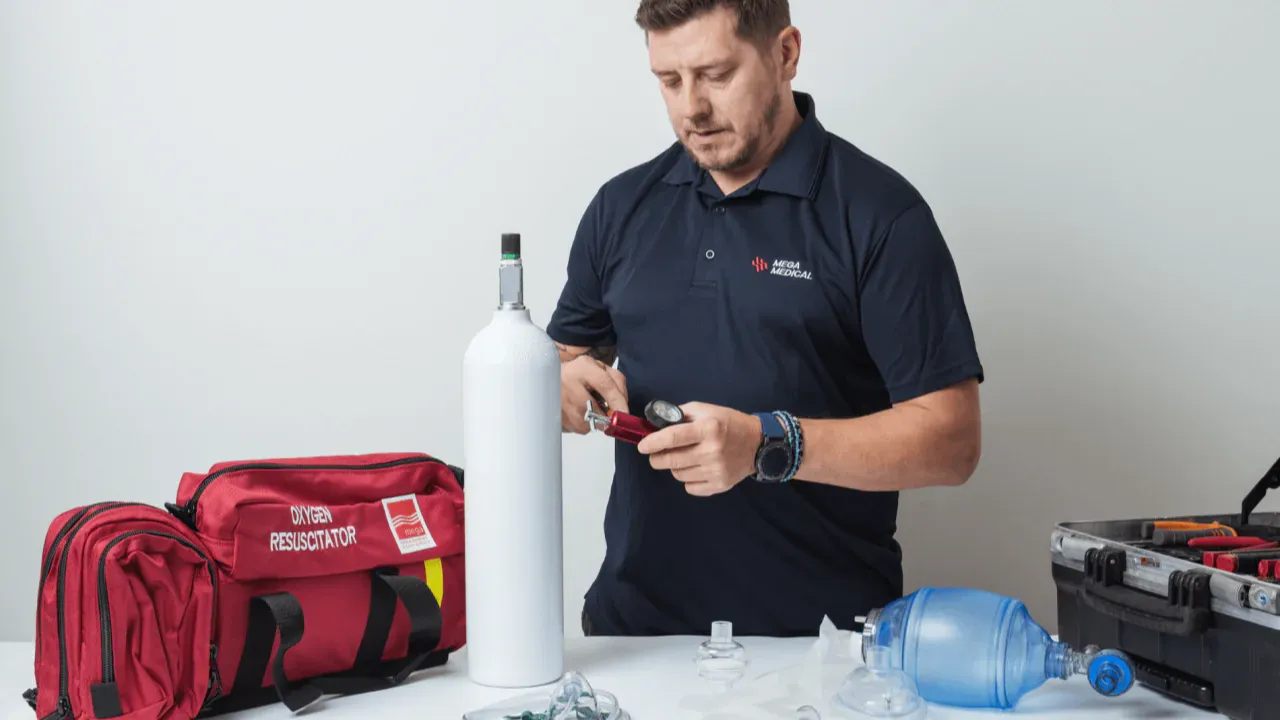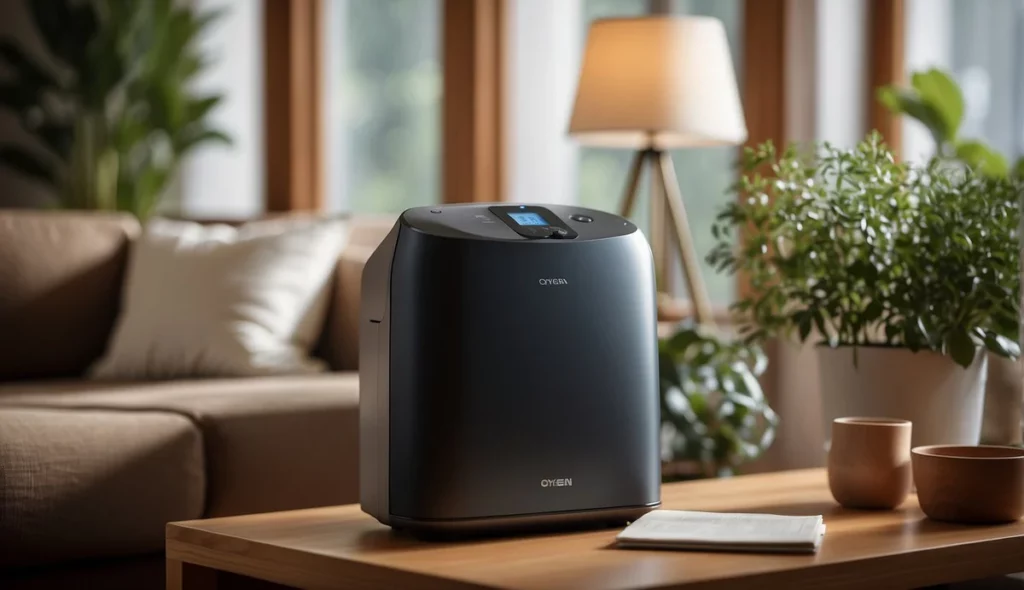How Much Does Oxygen Cost in Australia? A Guide for Home Users

Home oxygen therapy is a crucial medical treatment for people with respiratory conditions in Australia. However, the costs associated with this treatment can have a significant impact on patients and their families. Therefore, it is important to understand the financial aspects of managing oxygen therapy.
The expenses involved in home oxygen therapy include:
- Equipment costs
- Installation fees
- Ongoing maintenance
- Electricity consumption
- Regular supplies and accessories
To address these financial challenges, the Australian healthcare system has implemented various support mechanisms to assist patients. These include:
The cost of home oxygen Australia varies based on several key factors that directly impact patients’ expenses.
- Government subsidies through Medicare
- State-specific programmes offering financial assistance
- Private health insurance coverage options
- Specialised support for veterans and healthcare card holders
By understanding the available cost management options, patients can access the necessary treatment without experiencing excessive financial burden. The Australian healthcare system offers multiple pathways for financial assistance, ensuring that eligible individuals can receive appropriate support for their oxygen therapy needs.
This guide will explore the costs associated with home oxygen therapy in Australia and examine the different support mechanisms available to help manage these expenses. From government initiatives to private insurance options, there are various resources that patients can tap into in order to make this essential treatment more affordable.

Understanding Home Oxygen Therapy in Australia
Air Liquide Healthcare Pty Ltd has been Australia’s leading provider of respiratory care services since its establishment in 1995. The company delivers essential medical gases, equipment, and specialised homecare services to patients across the nation through an extensive network of 152 diagnostic and therapy service locations.
The organisation’s comprehensive range of services includes:
- Portable oxygen concentrators
- Home oxygen equipment
- Sleep apnea therapy devices
- Respiratory support systems
- Professional monitoring services
Air Liquide Healthcare’s Australian operations form part of a global healthcare network serving 3.8 million patients across 75 countries. The Australian division specifically caters to tens of thousands of home oxygen and sleep apnea patients, providing vital support for individuals managing chronic respiratory conditions.
The company’s service delivery model emphasises:
- 24/7 Technical Support: Round-the-clock assistance for equipment-related queries
- Personalised Care Plans: Tailored solutions based on individual patient needs
- Regular Equipment Maintenance: Scheduled servicing to ensure optimal performance
- Clinical Expertise: Access to qualified healthcare professionals
Through its extensive service network, Air Liquide Healthcare maintains strict quality standards in line with Australian healthcare regulations, ensuring patients receive reliable, professional-grade oxygen therapy solutions for their home care needs.
Factors Influencing the Cost of Home Oxygen Therapy in Australia
1. Prescription Requirements
Medical prescriptions dictate the specific oxygen flow rate and duration of use for each patient. Higher flow rates require more powerful equipment, such as a home oxygen machine, and increased oxygen consumption, leading to higher operational costs. A typical prescription might specify:
- Oxygen flow rate (measured in litres per minute)
- Hours of usage per day
- Type of delivery system required
2. Electricity Consumption
Home oxygen concentrators, like the Philips Everflo™, draw significant power to operate continuously. The electricity costs can add substantial amounts to monthly utility bills:
- Standard concentrators use 300-400 watts per hour
- Running costs average $30-50 per month
- 24/7 usage can increase household energy consumption by 20-30%
3. State-Based Rebates
Different Australian states offer varying levels of support for electricity costs associated with medical equipment:
- South Australia provides specific rebates for oxygen concentrator users
- Medical Energy Rebate schemes help offset power consumption costs
- Life Support Equipment Electricity Subsidy available in select regions
The actual cost impact depends on individual usage patterns, prescribed flow rates, and local electricity rates. State-specific rebate programmes can significantly reduce the financial burden for eligible patients requiring long-term oxygen therapy.
Government Initiatives and Support Mechanisms for Managing Expenses Related to Home Oxygen Therapy in Australia
The Australian government provides substantial support for individuals requiring home oxygen therapy through various state and federal initiatives. These programmes help reduce the financial burden associated with essential oxygen equipment and services.
Federal Government Support
The federal government offers the following support for home oxygen therapy:
- Medicare Benefits Schedule (MBS) covers specific oxygen therapy services
- Pharmaceutical Benefits Scheme (PBS) subsidises prescribed oxygen equipment
- National Disability Insurance Scheme (NDIS) may fund oxygen therapy equipment for eligible participants
State-Level Assistance
Each state in Australia has its own assistance programmes for home oxygen therapy:
- Medical Aids Subsidy Scheme (MASS) in Queensland
- Enable NSW programme
- Victorian Aids and Equipment Program
- Community Aids and Equipment Program (CAEP) in Western Australia
Key Support Features
These government initiatives provide various forms of support to manage expenses related to home oxygen therapy:
- Equipment rental subsidies
- Maintenance cost coverage
- Emergency backup service funding
- Transport assistance for oxygen equipment
Application Process
To apply for these government initiatives, specific documentation is required:
- Medical assessment reports
- Proof of residency
- Income statements
- Healthcare card details
Eligibility Criteria and Subsidy Levels
Each state has different eligibility criteria and subsidy levels for home oxygen therapy. Local healthcare providers play a crucial role in assisting patients in identifying suitable support programmes based on their individual circumstances and medical requirements.
Additional Support Available for Veterans, Health Care Card Holders, and Private Health Insurers Subsidies
The Department of Veterans’ Affairs (DVA) provides comprehensive support for eligible veterans requiring home oxygen therapy. Through the Rehabilitation Appliances Program (RAP), veterans with valid DVA health cards can access: Read more about rehabilitation at https://ubas.edu.pk/faculty-of-rehabilitation-sciences/
- Full coverage of oxygen equipment costs
- Regular maintenance and servicing
- Replacement parts and accessories
- Emergency backup cylinders
Health Care Card holders receive targeted assistance through state-specific programs. These cardholders qualify for:
- Reduced equipment rental fees
- Subsidised consumables
- Energy rebates for operating costs
- Priority technical support
Private health insurance providers in Australia offer varying levels of coverage for oxygen therapy equipment and services:
- Hospital Cover Plans: Include oxygen therapy during hospital stays
- Extras Cover: May subsidise home oxygen equipment rental
- Comprehensive Policies: Often feature higher rebates for respiratory care
The exact subsidy amount depends on the insurance provider and policy level. Private health insurers typically cover:
- Partial costs of oxygen concentrators
- Essential accessories and supplies
- Regular maintenance services
- Backup oxygen systems
Patients should contact their private health insurer directly to understand specific coverage details and claim processes for oxygen therapy equipment.
Guidance on Accessing Concessions, Subsidies, and Seeking Help from Respiratory Nurses or Specialist Clinics
Respiratory nurses and specialist clinics are vital resources for patients dealing with the complexities of home oxygen therapy support systems. These healthcare professionals have in-depth knowledge about available concessions, subsidies, and funding options specific to each patient’s situation.
Key Services Provided by Respiratory Specialists:
- Assessment of individual patient needs and eligibility for various support programs
- Documentation assistance for subsidy applications
- Regular monitoring of oxygen therapy effectiveness
- Coordination with equipment suppliers and healthcare providers
Specialist respiratory clinics have up-to-date information on state-specific programs and can guide patients to appropriate funding sources based on their location and circumstances. These clinics often operate within major hospitals or as standalone facilities, providing centralised access to respiratory care services.
Finding Professional Support:
- Ask GP for referral to local respiratory clinic
- Contact state health department for registered specialist clinics
- Reach out to Air Liquide Healthcare for connection to respiratory nurses
- Consult hospital social workers for additional guidance
Respiratory nurses play a crucial role in helping patients understand their equipment requirements and associated costs. They provide personalised advice on energy-saving strategies and can recommend suitable payment plans or financial assistance programs based on individual circumstances.
Conclusion
Home oxygen therapy remains accessible to Australian residents through a comprehensive network of support systems. The combination of government rebates, healthcare concessions, and private insurance subsidies creates multiple pathways for patients to manage treatment costs effectively.
The Australian healthcare framework recognises the essential nature of oxygen therapy by providing:
- Medicare-supported equipment subsidies
- State-specific electricity rebates
- DVA coverage for eligible veterans
- Private health insurance contributions
These financial assistance mechanisms demonstrate Australia’s commitment to ensuring patients receive necessary respiratory care without excessive financial burden. The established partnership between healthcare providers, government bodies, and insurance companies continues to evolve, making oxygen therapy increasingly affordable for home users across the country.
Patients seeking oxygen therapy can approach the process with confidence, knowing that various cost-management options exist to support their respiratory health journey. The Australian healthcare system’s structured approach to oxygen therapy funding stands as a model for accessible respiratory care delivery.